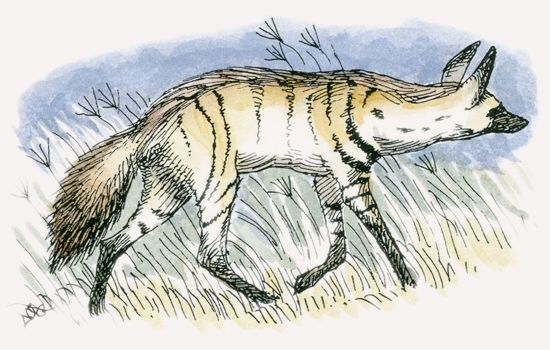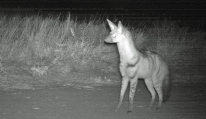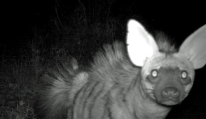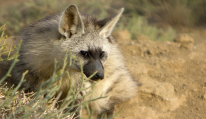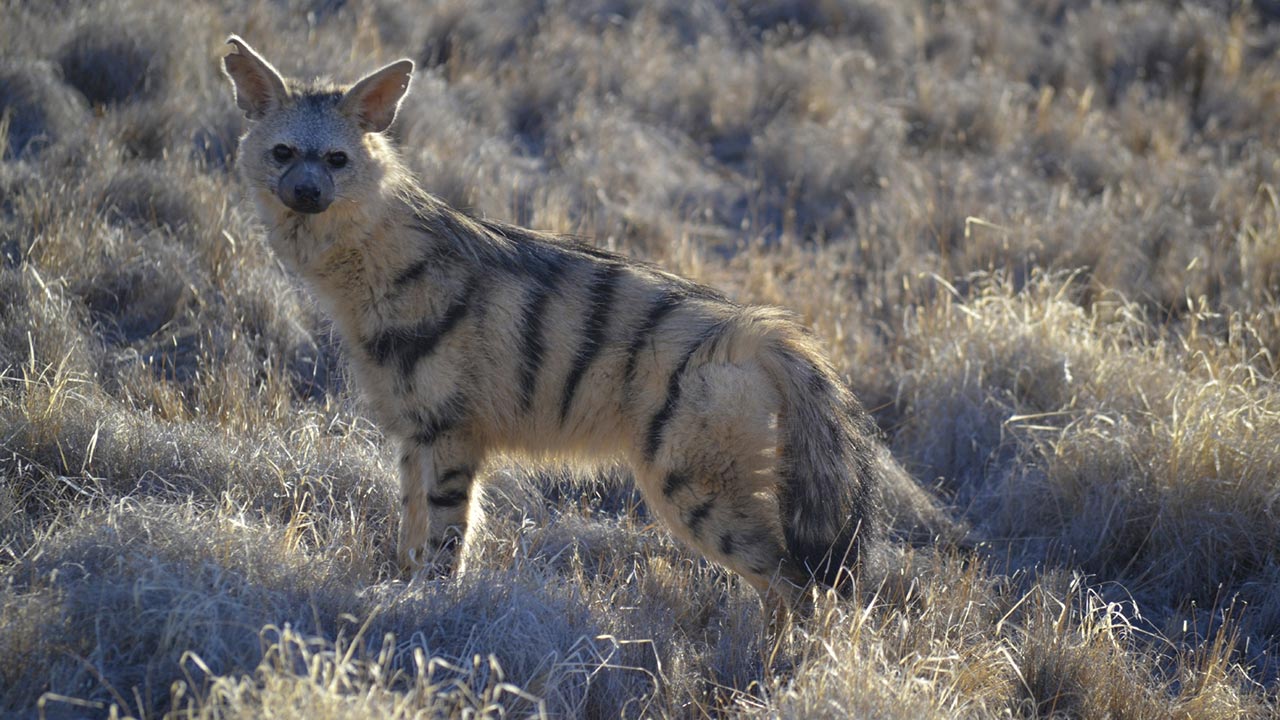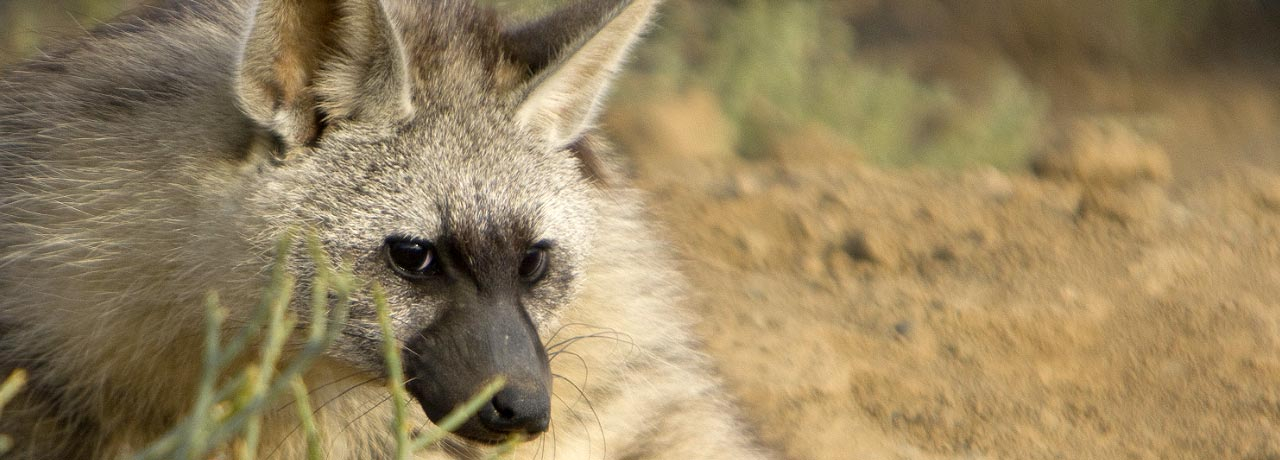Social Structure
Aardwolves lead mainly solitary lives, though they are socially monogamous, which means they stay with the same mate their whole lives. They fiercely defend their territories, as these are what determine access to food and mates.
Communication
Aardwolves communicate mainly through scent-marking, both to defend their territories and to time matings. They also use a range of verbal cues, particularly when they’re upset, including purrs, whines, clicks, growls, snarls, barks, squeals, and clucks.
Behavior
Nocturnal animals, aardwolves rest in their dens or in the shade during the heat of the day. In the cooler winter months, aardwolves may venture out during the late afternoon hours as well as at night. During the winter, their body temperature drops 18 percent, which allows them to conserve energy and decreases their need for water. Aardwolves adapt and expand dens dug—but abandoned—by springhares, as their front legs aren’t strong enough to dig new dens.
Conservation
The International Union for Conservation of Nature (IUCN) lists the aardwolf as a species of lower risk. But like many African carnivores, they do face threats from habitat loss.

